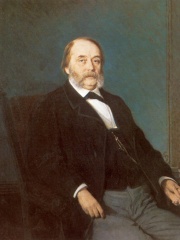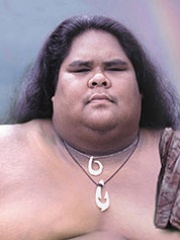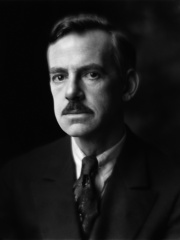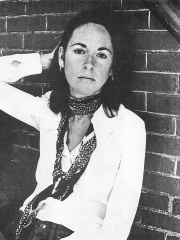WRITER
Nathaniel Hawthorne
1804 - 1864

 Nathaniel Hawthorne
Nathaniel Hawthorne
Nathaniel Hawthorne (né Hathorne; July 4, 1804 – May 19, 1864) was an American novelist and short story writer. His works often focus on history, morality, and religion. He was born in 1804 in Salem, Massachusetts, from a family long associated with the town. Hawthorne entered Bowdoin College in 1821, was elected to Phi Beta Kappa in 1824, and graduated in 1825. Read more on Wikipedia
His biography is available in 82 different languages on Wikipedia (up from 79 in 2024). Nathaniel Hawthorne is the 519th most popular writer (up from 535th in 2024), the 649th most popular biography from United States (down from 548th in 2019) and the 55th most popular American Writer.
Nathaniel Hawthorne is most famous for his novel, The Scarlet Letter.
Memorability Metrics
Page views of Nathaniel Hawthorne by language
Among WRITERS
Among writers, Nathaniel Hawthorne ranks 519 out of 7,302. Before him are August Wilhelm Schlegel, Robert Walser, Jostein Gaarder, Ivan Franko, Tibullus, and Ivan Goncharov. After him are Ilya Ehrenburg, Michel Houellebecq, Boris Vian, William S. Burroughs, Novatian, and G. K. Chesterton.
Most Popular Writers in Wikipedia
Go to all RankingsAugust Wilhelm Schlegel
1767 - 1845
HPI: 72.59
Rank: 513
Robert Walser
1878 - 1956
HPI: 72.59
Rank: 514
Jostein Gaarder
1952 - Present
HPI: 72.58
Rank: 515
Ivan Franko
1856 - 1916
HPI: 72.57
Rank: 516
Tibullus
50 BC - 19 BC
HPI: 72.53
Rank: 517
Ivan Goncharov
1812 - 1891
HPI: 72.53
Rank: 518
Nathaniel Hawthorne
1804 - 1864
HPI: 72.52
Rank: 519
Ilya Ehrenburg
1891 - 1967
HPI: 72.51
Rank: 520
Michel Houellebecq
1956 - Present
HPI: 72.51
Rank: 521
Boris Vian
1920 - 1959
HPI: 72.51
Rank: 522
William S. Burroughs
1914 - 1997
HPI: 72.47
Rank: 523
Novatian
220 - 258
HPI: 72.46
Rank: 524
G. K. Chesterton
1874 - 1936
HPI: 72.44
Rank: 525
Contemporaries
Among people born in 1804, Nathaniel Hawthorne ranks 13. Before him are Benjamin Disraeli, Mikhail Glinka, Emil Lenz, Allan Kardec, Marie Taglioni, and Mongkut. After him are Carl Gustav Jacob Jacobi, Richard Owen, Matthias Jakob Schleiden, John Deere, Eugène Sue, and Charles Augustin Sainte-Beuve. Among people deceased in 1864, Nathaniel Hawthorne ranks 7. Before him are George Boole, Maximilian II of Bavaria, Ferdinand Lassalle, Giacomo Meyerbeer, Benoît Paul Émile Clapeyron, and Vuk Karadžić. After him are Cheoljong of Joseon, Friedrich Georg Wilhelm von Struve, Princess Charlotte of Denmark, Hong Xiuquan, J. E. B. Stuart, and William I of Württemberg.
Others Born in 1804
Go to all RankingsBenjamin Disraeli
POLITICIAN
1804 - 1881
HPI: 74.72
Rank: 7
Mikhail Glinka
COMPOSER
1804 - 1857
HPI: 74.38
Rank: 8
Emil Lenz
PHYSICIST
1804 - 1865
HPI: 74.36
Rank: 9
Allan Kardec
OCCULTIST
1804 - 1869
HPI: 73.24
Rank: 10
Marie Taglioni
DANCER
1804 - 1884
HPI: 73.20
Rank: 11
Mongkut
POLITICIAN
1804 - 1868
HPI: 72.56
Rank: 12
Nathaniel Hawthorne
WRITER
1804 - 1864
HPI: 72.52
Rank: 13
Carl Gustav Jacob Jacobi
MATHEMATICIAN
1804 - 1851
HPI: 72.22
Rank: 14
Richard Owen
BIOLOGIST
1804 - 1892
HPI: 71.86
Rank: 15
Matthias Jakob Schleiden
BIOLOGIST
1804 - 1881
HPI: 71.61
Rank: 16
John Deere
INVENTOR
1804 - 1886
HPI: 70.77
Rank: 17
Eugène Sue
WRITER
1804 - 1857
HPI: 70.64
Rank: 18
Charles Augustin Sainte-Beuve
CRITIC
1804 - 1869
HPI: 70.16
Rank: 19
Others Deceased in 1864
Go to all RankingsGeorge Boole
MATHEMATICIAN
1815 - 1864
HPI: 76.22
Rank: 1
Maximilian II of Bavaria
POLITICIAN
1811 - 1864
HPI: 75.14
Rank: 2
Ferdinand Lassalle
SOCIAL ACTIVIST
1825 - 1864
HPI: 74.84
Rank: 3
Giacomo Meyerbeer
COMPOSER
1791 - 1864
HPI: 74.51
Rank: 4
Benoît Paul Émile Clapeyron
PHYSICIST
1799 - 1864
HPI: 74.08
Rank: 5
Vuk Karadžić
WRITER
1787 - 1864
HPI: 73.39
Rank: 6
Nathaniel Hawthorne
WRITER
1804 - 1864
HPI: 72.52
Rank: 7
Cheoljong of Joseon
POLITICIAN
1831 - 1864
HPI: 72.40
Rank: 8
Friedrich Georg Wilhelm von Struve
ASTRONOMER
1793 - 1864
HPI: 72.16
Rank: 9
Princess Charlotte of Denmark
NOBLEMAN
1789 - 1864
HPI: 71.63
Rank: 10
Hong Xiuquan
POLITICIAN
1814 - 1864
HPI: 71.46
Rank: 11
J. E. B. Stuart
MILITARY PERSONNEL
1833 - 1864
HPI: 70.53
Rank: 12
William I of Württemberg
POLITICIAN
1781 - 1864
HPI: 70.03
Rank: 13
In United States
Among people born in United States, Nathaniel Hawthorne ranks 649 out of 20,380. Before him are Martin Lewis Perl (1927), Joseph P. Kennedy Jr. (1915), Dave Bautista (1969), Tiny Tim (1932), Goldie Hawn (1945), and King C. Gillette (1855). After him are David Carradine (1936), Gordon Allport (1897), Dian Fossey (1932), Lucy Webb Hayes (1831), William Lipscomb (1919), and Israel Kamakawiwoʻole (1959).
Others born in United States
Go to all RankingsMartin Lewis Perl
PHYSICIST
1927 - 2014
HPI: 72.56
Rank: 643
Joseph P. Kennedy Jr.
MILITARY PERSONNEL
1915 - 1944
HPI: 72.56
Rank: 644
Dave Bautista
WRESTLER
1969 - Present
HPI: 72.55
Rank: 645
Tiny Tim
SINGER
1932 - 1996
HPI: 72.53
Rank: 646
Goldie Hawn
ACTOR
1945 - Present
HPI: 72.53
Rank: 647
King C. Gillette
BUSINESSPERSON
1855 - 1932
HPI: 72.52
Rank: 648
Nathaniel Hawthorne
WRITER
1804 - 1864
HPI: 72.52
Rank: 649
David Carradine
ACTOR
1936 - 2009
HPI: 72.52
Rank: 650
Gordon Allport
PSYCHOLOGIST
1897 - 1967
HPI: 72.50
Rank: 651
Dian Fossey
BIOLOGIST
1932 - 1985
HPI: 72.50
Rank: 652
Lucy Webb Hayes
POLITICIAN
1831 - 1889
HPI: 72.48
Rank: 653
William Lipscomb
CHEMIST
1919 - 2011
HPI: 72.47
Rank: 654
Israel Kamakawiwoʻole
MUSICIAN
1959 - 1997
HPI: 72.47
Rank: 655
Among WRITERS In United States
Among writers born in United States, Nathaniel Hawthorne ranks 55. Before him are Henry James (1843), Philip Roth (1933), Dan Brown (1964), Harper Lee (1926), Eugene O'Neill (1888), and Louise Glück (1943). After him are William S. Burroughs (1914), Tennessee Williams (1911), Richard Bach (1936), Robert A. Heinlein (1907), Tom Clancy (1947), and Sidney Sheldon (1917).
Henry James
1843 - 1916
HPI: 73.37
Rank: 49
Philip Roth
1933 - 2018
HPI: 73.35
Rank: 50
Dan Brown
1964 - Present
HPI: 73.29
Rank: 51
Harper Lee
1926 - 2016
HPI: 73.28
Rank: 52
Eugene O'Neill
1888 - 1953
HPI: 73.26
Rank: 53
Louise Glück
1943 - 2023
HPI: 72.92
Rank: 54
Nathaniel Hawthorne
1804 - 1864
HPI: 72.52
Rank: 55
William S. Burroughs
1914 - 1997
HPI: 72.47
Rank: 56
Tennessee Williams
1911 - 1983
HPI: 72.40
Rank: 57
Richard Bach
1936 - Present
HPI: 72.37
Rank: 58
Robert A. Heinlein
1907 - 1988
HPI: 72.14
Rank: 59
Tom Clancy
1947 - 2013
HPI: 72.02
Rank: 60
Sidney Sheldon
1917 - 2007
HPI: 71.91
Rank: 61



























































